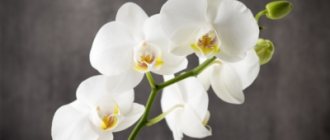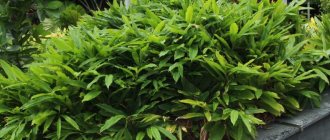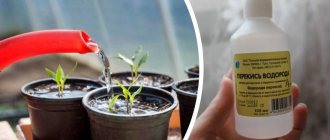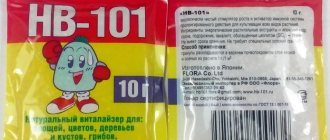Those who are keen on gardening or love to grow plants know that a good harvest and healthy flower growth requires considerable effort and expense.
To make the plant pleasing to the eye, various fertilizers are used, but for safety reasons, many prefer to use natural fertilizers, without chemical additives, since they are completely safe.
Fertilizer HB 101 has this characteristic; its use and consumer reviews confirm the effectiveness of this product.
Content
- Explanation of the abbreviation “HB-101”
- Purpose and application of “HB-101”
- Mechanism of action
- Manufacturer
- Composition of the drug "HB-101"
- Preparative form (release format)
- Regulations for the use of the drug HB-101
- Compatibility "HB-101"
- Distinctive features, advantages and disadvantages
“HB-101” ... there is a lot of different and contradictory information about this drug, and there are some that are not at all true. Let's try to figure out what its distinctive advantages are, what is unique about its composition, how it works, who produces this drug and how to use it correctly in practice. And also where to buy so as not to run into a fake. Everything is detailed in this material.
Instructions for using fertilizer HB 101
This type of feeding is optimal for all types of plants and even shrubs.
A standard 6 milligram package is designed to be mixed with 130 liters of water. For example, a couple of drops of nutrient liquid are enough for 1000 milliliters. Moreover, all bottles are equipped with a dispenser: errors in dosage are excluded. It is recommended to irrigate plant and vegetable crops daily.
How to breed HB 101
For foliar and root additives, the drug is prepared as follows:
- The liquid formula is diluted with settled water in the proportion of 2 drops per 1 liter of water. Approximate portion per 1 hundred square meters - 1 bucket. It is best to dose in drops, because the bottle has a measuring pipette.
- The granules are not dissolved before use. It is most convenient and effective to distribute them over the intended planting area in the autumn after digging in the proportions of 1 gram per square meter. For indoor plants, add up to 5 granules per 1 liter of soil mixture.
Recommendation! The granular material is not buried in the ground, but scattered around the area: this way they will dissolve in the ground over the winter period, and by spring they will begin to act.
How to use growth stimulator hb 101
Correct use requires proper determination of the dosage of the culture and adherence to a certain frequency of use.
Application of hb 101 for seedlings
We put any seed material into a container and fill it with the drug solution according to the instructions. We leave all this overnight. For such purposes, add 2 drops of HB101 to a liter of settled water. Afterwards we spray it on the seedlings.
How to water hb 101 vegetable crops
A universal scheme is provided for all vegetable crops:
- Before preparing the area for planting, water it up to four times with nutrient liquid at a set dose of 2 drops per 10-liter bucket of water.
- The next stage is simmering the seeds for half a day in liquid at a rate of 2 drops per liter of settled water.
For seedlings, the periodicals are different: three times a month.
After planting the seedlings in a permanent place, it is recommended to increase foliar spraying to once a week. At the same time, try to water the ovary: the formation of the fruit will go faster.
The bushes are irrigated 4 times per season.
How to use hb 101 for feeding melons and melons
Processing melons at different stages of development is no different from other crops.
Instructions for use for cereals
According to general requirements, organize the processing of cereal plants as follows:
- Before sowing, it is necessary to water the soil mixture up to three times at a dosage of 1 milligram per bucket of water;
- Seed material is soaked in liquid for 3 hours at a dose of two drops per liter of water;
- Spraying young greenery up to three times a month at a rate of 1 milliliter per bucket of water;
- Before harvesting, I have time to spray 5 times at weekly intervals at the same dosage.
How to use HB 101 for fruit and berry crops
The same processing scheme as for vegetables applies to fruit and berry plants. Treatment must be carried out up to 5 times per season.
Fertilizing HB 101 for garden flowers and ornamental shrubs
Garden flowers, including roses, are processed three times per season according to the following formula:
- Before starting sowing, the soil is treated three times with Vitalizer at a dosage of 2 drops per 1 liter of water.
- The seed material is immersed in a nutrient solution at the same dosage overnight.
- After transplanting and obtaining the first greenery, irrigate with a mixture in a similar concentration.
Conifers require a different approach. For them, a solution of 30 drops per 10 liters of warm water is used. The prepared substrate is sprayed on the coniferous paws until the liquid drips from them like rain. This treatment will be needed 3 times per season. Don't forget about the off-season - spring and autumn.
As for trees, azalea oak and pine bonsai are irrigated with a mixture once every 10 days at the rate of 3 drops per 10 liters.
Maple, birch, pine, cypress, cedar - once every six months we distribute granules near the tree trunk.
Fruit trees and shrubs - in the off-season we use granules along the perimeter of the crown. Once a week, spray with liquid up to three times at a dosage of 1 drop per 1 liter.
Application of natural Vitalizer HB 101 for lawns
To feed lawn grass, a granular consistency is used. The calculation is as follows: up to one gram of granules is scattered per square meter. This work is carried out with the onset of autumn.
Saving dying conifers
To provide emergency aid to conifers, you will need to dilute the mixture 1 to 30 and pour it through a tube to the tree trunk.
Root and bulbous crops
Bulbous plants and root vegetables include potatoes, cruciferous vegetables, carrots, lilies, tulips, and muscari. The soil is prepared by irrigation with a solution in the proportions of 10 liters of water to 1 milliliter of liquid. We carry out this work three times before the sowing campaign. Soak the bulbous material in a solution for half an hour - a couple of drops per 1 liter of water. Every 10 days until the root crops are harvested, we spray the crops in the same proportions.
Indoor flowers
For different types of potted plants, the following treatment scheme is provided: dilute two drops of liquid and add to a liter of water. We spray each plant weekly. The procedure lasts up to six months, and sometimes up to a year. If there are plant crops that are cultivated hydroponically, then the same scheme must be applied to them.
As for plants in hydroponics, there is one caveat: fertilizing is carried out for plants on coconut shavings, quartz sand, and mineral wool. But in the presence of perlite, peat, vermiculite, hydrogel, watering with the solution is prohibited.
Vitalizer for mushrooms
When cultivating mycelium, a liquid substrate is added to the nutrient soil mixture at the rate of 3 milliliters of liquid per 10 liters of water. They practice weekly irrigation of mushrooms in the same concentration. At night, add the solution to the woody environment at a rate of 2 milliliters per 10 liters of water. Afterwards, irrigate with liquid weekly in the same composition.
HB 101 for orchids how to use in drops
Feeding with Vitalizer or hb preparation is necessary if:
- The plant is transplanted into a new container.
- It is necessary to awaken the kidneys that are sleeping.
- There was a long transportation.
- It is necessary to actively grow the root system.
- No required height.
- Reduced immunity.
- The climate during maintenance did not meet the needs of the flower.
- No buds or flowering.
For orchids, cyclamen, camellia, roses, bamboo, and other decorative flowers, it is necessary to irrigate the soil and foliage with the prepared solution in the ratio of 2 drops of liquid per liter of water every ten days throughout the calendar year.
Granules are also used, but only when transplanting: they are distributed in the amount of 5 pieces throughout the container.
Transplantation of children's shoots
If up to 4 roots appear with a length of 5 centimeters, then it is necessary to divide the bush. To activate growth, the young plant must be briefly placed in a growth stimulator. To do this, take warm water (1 liter), heated to 35 degrees, and then drop a drop of solution from a pipette, mix everything, lower the sprout.
Transplanting an adult orchid
When replanting an adult plant, we take the same proportions: one drop of liquid per liter of warm water.
After using the transshipment method, we remove the plant from the container and carefully clear all the roots from the soil. We lightly rinse the roots under the tap, removing the affected areas. Before special treatment, all wounds are disinfected with hydrogen peroxide. Next, place the flower crop in the prepared mixture for half an hour. After this, we plant it in a new container and soil.
View this post on Instagram
Post from ORCHIDS











